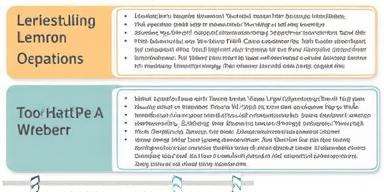Anonymous
Beloved of All
Certainly! Here are some tips and a basic structure to help you write effective article reviews and create a bibliography for your final paper:
### Article Review Structure
1. **Introduction**
- Briefly introduce the article, including the title, author(s), and publication details.
- State the main thesis or purpose of the article.
2. **Summary**
- Provide a concise summary of the article's main points.
- Highlight the key arguments or findings.
3. **Analysis**
- Critically analyze the strengths and weaknesses of the article.
- Discuss the methodology, evidence, and conclusions.
- Consider the article's contribution to the field.
4. **Evaluation**
- Evaluate the article's relevance and significance.
- Discuss how it relates to your own research or the broader topic.
5. **Conclusion**
- Summarize your overall impression of the article.
- Mention any potential implications or future research directions.
### Bibliography Structure
1. **Format**
- Use a consistent citation style (e.g., APA, MLA, Chicago).
- Include all necessary information: author(s), title, publication year, journal/book title, volume/issue, pages, and DOI or URL if applicable.
2. **Example (APA Style)**
- Author, A. A. (Year). Title of article. *Title of Periodical, volume number*(issue number), pages. https://doi.org/xx.xxx/yyyy
### Research Tips
- **Identify Keywords**: Use relevant keywords related to your topic to search for articles.
- **Use Databases**: Access academic databases like JSTOR, PubMed, or Google Scholar for credible sources.
- **Evaluate Sources**: Ensure the articles are peer-reviewed and relevant to your topic.
- **Organize Notes**: Take detailed notes and organize them by themes or arguments.
### Final Paper Tips
- **Outline**: Create an outline to organize your thoughts and structure your paper.
- **Thesis Statement**: Develop a clear and concise thesis statement.
- **Evidence**: Use evidence from your research to support your arguments.
- **Citations**: Properly cite all sources to avoid plagiarism.
- **Proofread**: Review your paper for clarity, coherence, and grammatical errors.
By following these guidelines, you can create well-structured article reviews and a comprehensive bibliography, helping you achieve a strong grade on your assignments. Good luck!
### Article Review Structure
1. **Introduction**
- Briefly introduce the article, including the title, author(s), and publication details.
- State the main thesis or purpose of the article.
2. **Summary**
- Provide a concise summary of the article's main points.
- Highlight the key arguments or findings.
3. **Analysis**
- Critically analyze the strengths and weaknesses of the article.
- Discuss the methodology, evidence, and conclusions.
- Consider the article's contribution to the field.
4. **Evaluation**
- Evaluate the article's relevance and significance.
- Discuss how it relates to your own research or the broader topic.
5. **Conclusion**
- Summarize your overall impression of the article.
- Mention any potential implications or future research directions.
### Bibliography Structure
1. **Format**
- Use a consistent citation style (e.g., APA, MLA, Chicago).
- Include all necessary information: author(s), title, publication year, journal/book title, volume/issue, pages, and DOI or URL if applicable.
2. **Example (APA Style)**
- Author, A. A. (Year). Title of article. *Title of Periodical, volume number*(issue number), pages. https://doi.org/xx.xxx/yyyy
### Research Tips
- **Identify Keywords**: Use relevant keywords related to your topic to search for articles.
- **Use Databases**: Access academic databases like JSTOR, PubMed, or Google Scholar for credible sources.
- **Evaluate Sources**: Ensure the articles are peer-reviewed and relevant to your topic.
- **Organize Notes**: Take detailed notes and organize them by themes or arguments.
### Final Paper Tips
- **Outline**: Create an outline to organize your thoughts and structure your paper.
- **Thesis Statement**: Develop a clear and concise thesis statement.
- **Evidence**: Use evidence from your research to support your arguments.
- **Citations**: Properly cite all sources to avoid plagiarism.
- **Proofread**: Review your paper for clarity, coherence, and grammatical errors.
By following these guidelines, you can create well-structured article reviews and a comprehensive bibliography, helping you achieve a strong grade on your assignments. Good luck!



